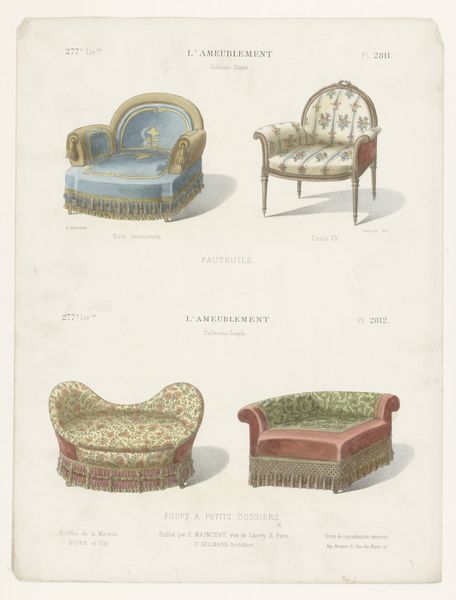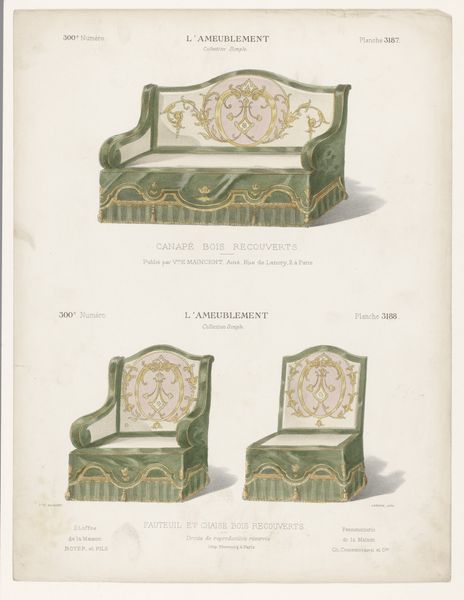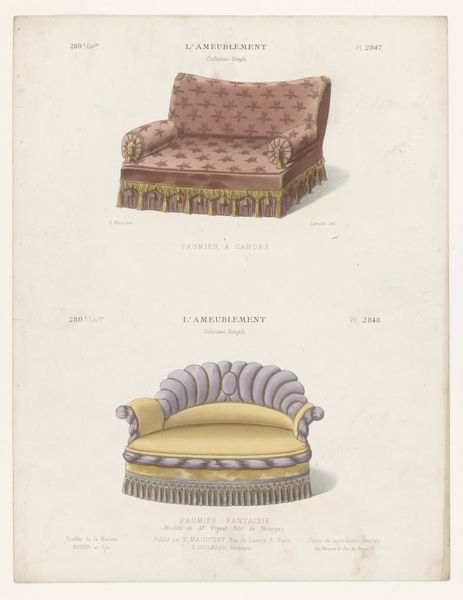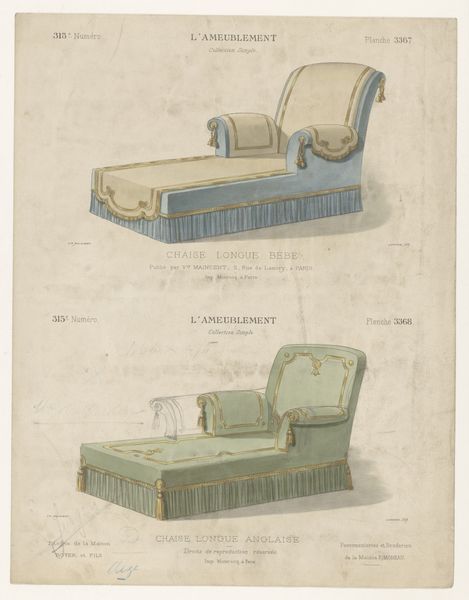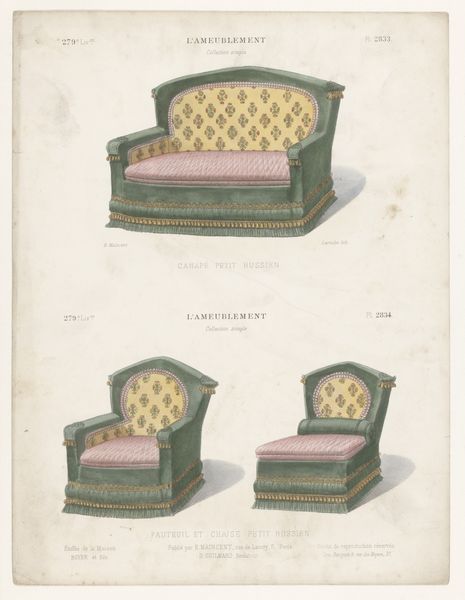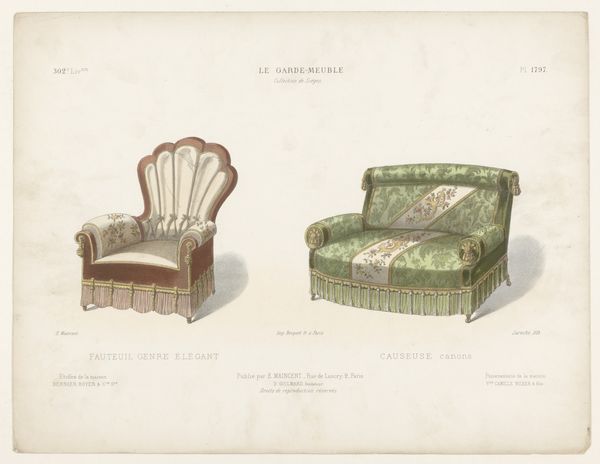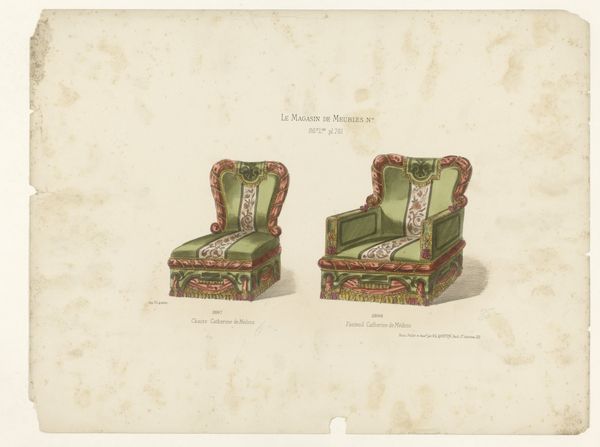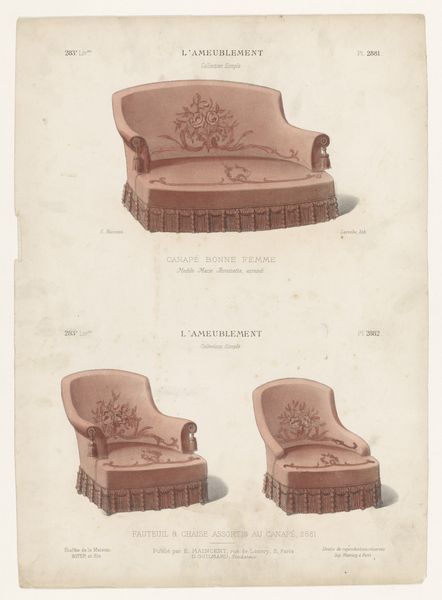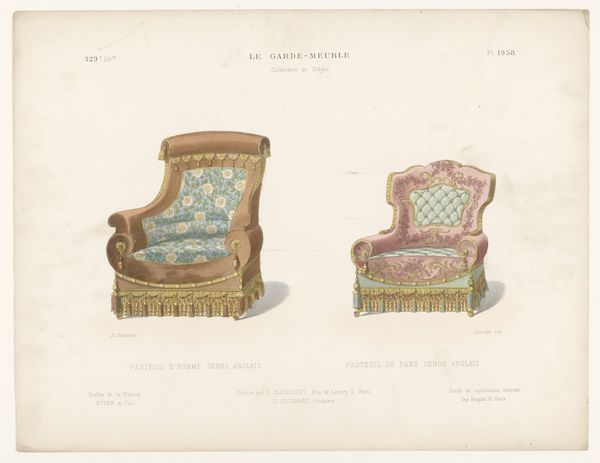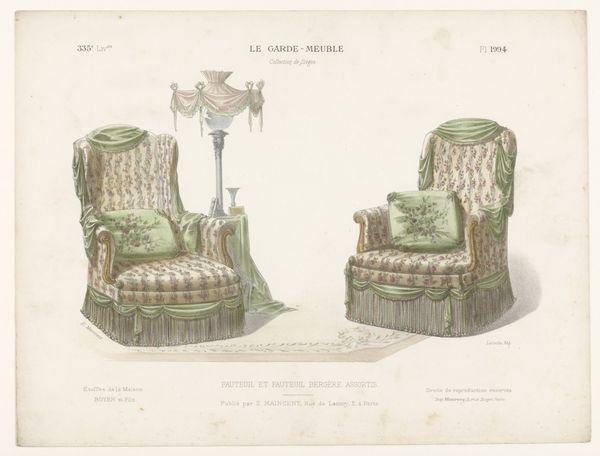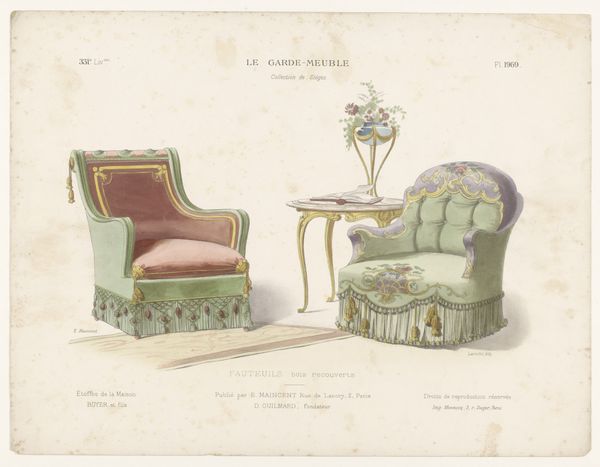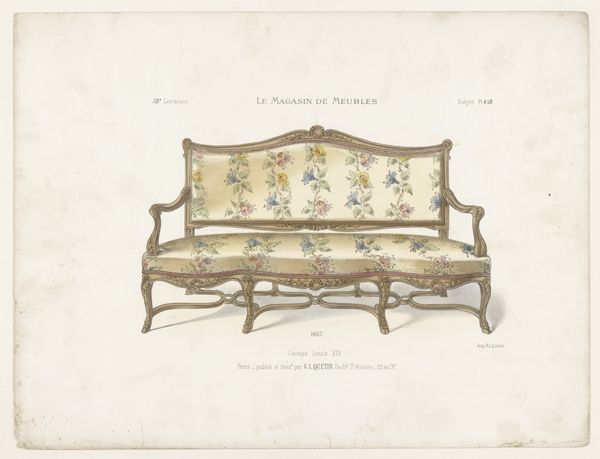
drawing, print
#
drawing
# print
#
decorative-art
Dimensions: height 355 mm, width 276 mm
Copyright: Rijks Museum: Open Domain
Curator: Oh, this piece practically screams late 19th-century bourgeois comfort. It's a print featuring furniture designs by Léon Laroche, sometime between 1885 and 1895. Editor: My initial reaction is pure decadence! All that fringe! It speaks of a certain ostentation, doesn't it? Curator: Indeed. This print is part of the decorative arts tradition, meant to showcase fashionable items of the time. What’s interesting here is that the designs aren't just furniture. These pieces function almost as status symbols in a quickly changing world. Editor: Right, that excessive ornamentation – the tassels, the patterned upholstery – serves less of a functional purpose, and more to broadcast wealth, leisure, and taste. The symbolism of these pieces connects to rising class aspirations. Curator: Exactly! These chaise longues and sofas were the settings for social rituals, courtship, afternoon tea… Furniture was heavily invested with cultural meaning during this period. And notice the titles given to these particular designs: The "Chaise Longue Waddington" and the "Canapé Rothschild". The names create an association with notable individuals or families, thereby lending social cachet to those who acquire these furnishings. Editor: So it’s not just about owning a sofa, it's about owning a piece associated with prestige and power. The designers tapped into the aspirations of a growing consumer class, and are embedding symbolic significance within the very names given to their designs. Curator: Absolutely, it really highlights the shift from craftsmanship to consumer culture, where objects like these became central to social positioning. Editor: Considering this in the context of today’s design culture helps you recognize similar appeals. The fundamentals never really change, do they? Curator: It provides such a valuable perspective for examining our relationship with objects in our own era.
Comments
No comments
Be the first to comment and join the conversation on the ultimate creative platform.

